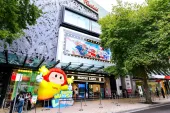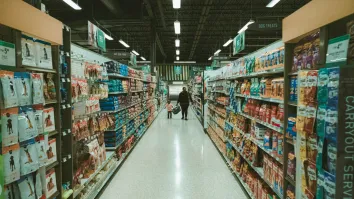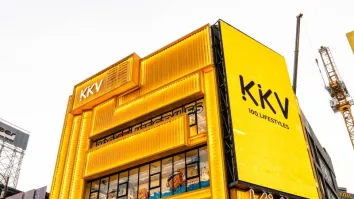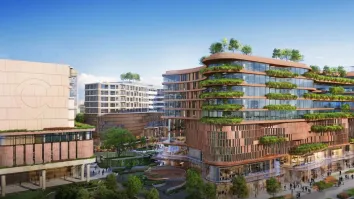More than just eye candy
Technology has been changing the way retailers do everything, including visual merchandising. But is it enough to appeal to today’s shoppers? Muneerah Bee takes a peek at how this area is evolving in the industry.

Visual Merchandising plays a very strategic role in communicating the brand in the retail space. It reflects its values and aspirations.
There is no denying that visual merchandising leaves an impact on buying behaviour, affects consumer response and does make a difference to the shopping experience.
Acting as a window to the range of tools that retailers have at their disposal, visual merchandising (VM) brings merchandise to life, puts across the personality of the store and injects theatre into the retail space. Tom Ng, founder of the shoe brand Pazzion, opines that a successful piece of visual merchandising work will be able to stop passers-by to have extra look at the display, attract their attention to enter the store and lastly, trigger their impulsiveness to purchase the product.
“Visual merchandising is usually one of the reasons that stops passersby in their tracks and lure them into the store. A nicely laid-out shop and product showcase also signals quality and heightens the attractiveness of the product.
“This is like the start of the cycle — of course in a traditional shopping cycle. Now, the start probably comes from online,” he says.
Indeed, the customers’ experience is vital when they interact with brands, especially in today’s ‘experience economy’, as Geraldine Ong, lecturer and programmes facilitator, Singapore Institute of Retail Studies, puts it. “As a key touchpoint in the customer’s engagement with the brand, a retail space has to be productive, engaging and experiential.
“VM plays a very strategic role in communicating the brand in the aspirations.
“Captivating visual merchandising excite customers and encourage them to draw inspirations from the brand. It influences the customer’s behaviour and perspective of the products. It also helps to attract footfall in the highly competitive retail landscape,” she comments.
Matthew Valentine, editor of Retail Design World, — an online platform covering all elements of the international retail design sector, also notes that VM can be changed quickly and at relatively low cost. “It’s vital to make stores that people want to visit,” he echoes.
Important elements
As VM is supposed to make people stop in their tracks when they are going past a store, having that element of surprise usually works, according to Ng, especially if your product is new.
New products creatively displayed bring out the wow factor that draws customers to them, and it could also create a buzz among the target audience, he adds.
Besides the experimental and surprise elements, it is also important for retailers to be experiential with their displays as more customers are looking for experiences.
Ng explains: “They want to feel engaged, to be part of the brand or shopping experience. They no longer want to just walk past a nice display or nicely laid-out shelf. They want to feel involved; they don’t want just to be sold to. So, having a display that allows them some level of participation can increase the time that they dwell in your store or in front of your display, and that additional dwell time increases your chance of selling products to them. For example, instead of just selling shoes, maybe talk about a place that you can wear the shoes to, and with that, allow them to experience the place with photos/videos or even travel recommendations to the place.”
Ng also advises retailers to be relevant when it comes to visual merchandising. “Of course, the underlying fundamental is that the VM should be something that they can associate with, or something that they can either relate to themselves or relate back to the product.
“So, if the product has a certain function that you want to sell, be sure to convey that function through your VM. Because a picture or, in this case, a display, speaks a thousand words,” he adds.
Another important element of VM, according to Ong, is “an amazing story — in colour!” The colours must be within the context of a story that the brand is telling and customers should be able to identify and relate to the story.
“The story told through VM at the retail space must continue to send a clear and consistent message that the brand has been communicating through its other channels.

“Colours draw the customers’ attention to specific areas and encourage purchasing decisions to be made. In fact, research shows that 60% of purchase decisions are correlated with colours,” she says.
As shoppers these days have a wide frame of reference — some may have literally seen it all before — therefore retailers have to think and work hard to impress them — and it starts with understanding the customers and what they need. Valentine shares: “It’s all about creativity, and finding innovative ways to grab attention.”
Some smart retailers are also building on previous displays, with some store windows running themes that are continued through different seasonal collections. He continues: “And it seems to me that there is a lot of humour in windows lately. We can get convenience by shopping online, but when we go to stores we want to be entertained.”
Recent trends in VM are also getting bolder and more daring, because engaging consumers in their shopping trip serves as a plus point in the whole buying experience. Pazzion’s Ng recalls: “One good example will be the Gentle Monster stores in South Korea. Each store was designed in different themes and concepts to entice the consumers in a 360-degree environment.
“They evoke emotions and are visually appealing at the same time, thereby contributing to the basic five human senses.”
Ong points out that retail today is indeed experiential and it is no longer just about buying products. “Customers crave for new experiences in the store and when those experiences are rewarding, they create a greater connection with the brand.
“The retail space has evolved to encapsulate experiential elements — becoming a community stronghold — that allows customers to engage with brands’ product offerings.”
Technology’s role

Additionally, customers these days expect to have digitally-enhanced physical experiences and are willing to experiment with and embrace new technologies. Hence, retailers have to devise innovative ways to impress them and some are adopting more digital technologies in visual merchandising to create excitement and enhance engagement — and some storefronts also have visual and audio cues such as digital signages to elevate their product offerings.

Ong says: “Brands should use technology to transform the shopping experience into entertainment. This can subsequently translate into a relationship with the brand. Consider tools that can become a point of solution for customers. For example, provide more information of the product offerings that will help customers make their buying decisions.

“For those in the fashion industry, Interactive Mirrors can be adopted to help customers identify products that suit them without having to physically try them on.
“The space originally planned for fitting rooms can then be used for other visual displays that could potentially generate more sales.”
Mobile apps can be tapped upon as interactive product information dispensers. Beauty brands have also incorporated technologies such as augmented reality (AR) with their product displays to enable customers to “try” the makeup products before purchase.

Ng shares an example of Zara’s effort in rolling out an AR experience for shoppers. “When you snap a photo of the window display using their app, it shows you models wearing the outfits, strutting their stuff right in front of you.
“With technology, it gives us retailers a wider scope in terms of visual merchandising; in the past, everything had to be displayed in the store, on the shelf or in the window. Now, the possibilities are limitless.”
However, he notes that some technologies are still in infancy and will take a while to be fully matured and adopted, so Pazzion is currently still not headed down this path yet. “In terms of VM, our next big step is experimenting with large-format screens within the stores to replace posters and billboards.
“The large-format screens also allow us to change and refresh the look of the store with different photos/videos and provides a more engaging way of interacting with our shoppers,” Ng reveals.
Valentine adds that technology can be a fantastic tool when used appropriately. “But the idea and the message are always the most important thing. If technology can help you deliver that message more effectively, it’s great.
“If it is just there for the sake of it, it usually gets in the way. A boring message doesn’t become an interesting one just because you use technology to deliver it,” he cautions.




















 Advertise
Advertise





